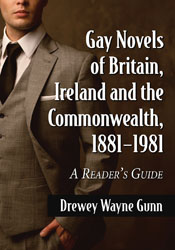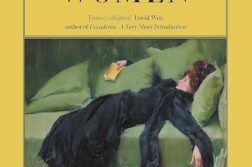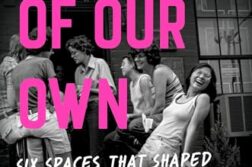 Gay Novels of Britain, Ireland and the
Gay Novels of Britain, Ireland and the
Commonwealth, 1881-1981: A Reader’s Guide
by Drewey Wayne Gunn
McFarland. 204 pages, $45.
THIS BOOK is a bona fide curiosity—a volume of 125 short surveys of major, minor, and often totally neglected works of British, Irish, and Commonwealth gay male fiction, published in the hundred years immediately preceding the advent of AIDS. Author Drewey Wayne Gunn—a retired professor of English from Texas with eleven other books to his name—faced with the need for a starting point, has chosen to identify the founding of the genre as the 1881 publication of Jack Saul’s notorious The Sins of the City of the Plain.
In fact, Gunn’s brief introductory rationale for this starting point may be the least persuasive thing in the book.
Richard Canning is editor of Ronald Firbank’s novel Vainglory (Penguin Classics, 2012) and is completing a critical biography of Firbank for publication in 2016.






